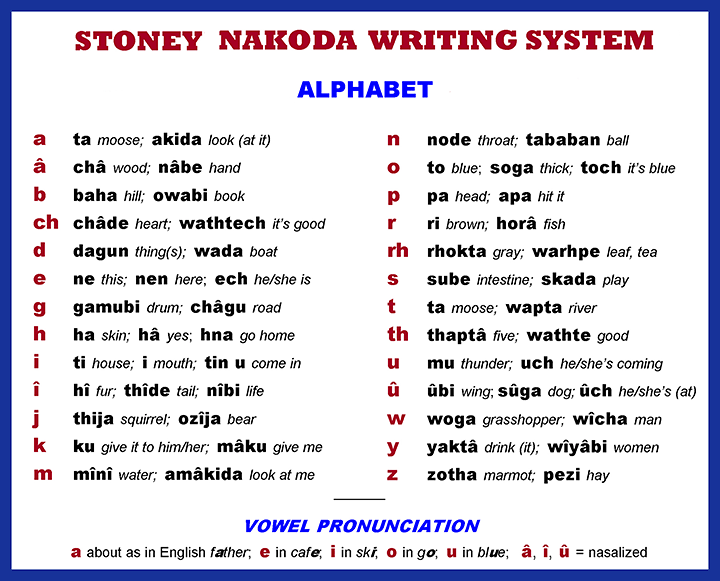
A short introduction to the Stoney Nakoda writing systemCOFFEE WITH WARREN, with Warren Harbeck |

|
The Stoney Nakoda alphabet follows the keyboard tradition employed by most North American computers and smart phones. Vowels fall into two categories: oral and nasalized, as in French. The combination /ch/ is pronounced about like the “ch” in the English word “church.” The letter “g” is always pronounced hard, as in the English word “give.” The symbols /r/ and /rh/ represent guttural “h”-ish sounds lacking in English; their pronunciation is best learned by listening to a native speaker. The Stoney Nakoda dialect of Sioux spoken along the Alberta foothills at Morley, Eden Valley and Big Horn is a language rich in linguistic and cultural beauty. This winter, fellow columnist Trent Fox, of Morley, and I are teaching an introductory course in Stoney Nakoda at the University of Calgary. Trent, a PhD candidate at the U of C, is covering the historical and cultural heritage reflected in the language. My role is that of a structural linguist, providing an overview of the sounds, grammar and writing system of the language. Since many of our non-Stoney coffee companions have shown an interest in the writing system, I thought for this week’s column I’d offer a brief look at the official alphabet. This system, developed and extensively tested by a team of Elders, educators and other members of the Stoney community, was authorized by the Stoney Tribal Council in the mid-1970s. By the way, this is also the system Trent and I use for representing the Stoney Nakoda language in our newspaper columns. The writing system follows a phonetically consistent one-to-one correlation between sound and symbol (letter). That is, unlike English writing, each symbol is always pronounced the same way every time it occurs, and each sound is always represented by one symbol only. For example, /i/ is always pronounced like the “i” in the English word “ski,” but never like the “i” in “hit” or “high.”
© 2017 Warren Harbeck |